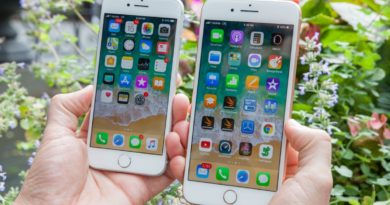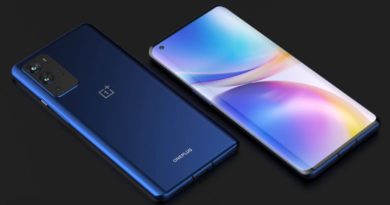iPhone XR vs iPhone XS vs iPhone XS Max: What should you buy?
Some are still debating iPhone XR vs XS — yes, even as Apple’s released another new generation of its iPhones, and long since moved the iPhone XS and iPhone XS Max off its shelves, the company’s older iPhones are still great, and available elsewhere, making them a compelling alternative for those who want an iPhone without breaking the budget — which the new iPhone 12 models may.
The iPhone XR, though, is the sole 2018 iPhone that Apple hasn’t removed from its lineup, outlasting the Oct. 2020 iPhone 12 launch. So, while many would have bet money that Apple would have killed it off, Apple kept it around — and made it cheaper than ever. We’ve already pitted the XR (pronounced “ten-R”) against Apple’s latest budget phone in our iPhone SE vs iPhone XR face-off.
But you should also check out our iPhone XR vs. iPhone 11 face-off to see what’s different between 2018’s cheapest iPhone and its successor.
The XS and XS Max have been replaced with the iPhone 11 Pro and iPhone 11 Pro Max. Apple lowered the official iPhone XR price to $499, while Best Buy now has it for even less: $399, after that model initially debuted at $749. But don’t expect Apple to forget about the XS/XR phones, which are getting new tricks in iOS 14, including one camera feature explained below.
If you have an iPhone XR, but want an iPhone 12, Apple will currently give you up to $250 in trade-in value for your phone.
But if you want an iPhone released this year, our iPhone SE 2020 review shows why the latest iPhone — you’re not seeing things, Apple released a $399 iPhone — is an easy pick for folks on a budget.
If you’d rather jump to the most recent models, check out our iPhone 11 vs. iPhone 11 Pro vs. iPhone 11 Pro Max explainer. With all of these guides and comparisons, we hope we can help find the best iPhone for you.
Here’s how the iPhone XR, iPhone XS and iPhone XS Max compare.
iPhone XS vs. iPhone XS Max vs. iPhone XR
| iPhone XS | iPhone XS Max |
iPhone XR |
|
| Starting Price | $899 / £999 / AU$1,629 | $999 / £1,099 / AU$1,799 | $499 / £499.00 / AU$849 |
| Processor | A12 Bionic | A12 Bionic | A12 Bionic |
| Screen | 5.8-inch OLED (2,436 x 1,125 pixels) | 6.5-inch OLED (2,688 x 1,242 pixels) | 6.1-inch LCD (1,792 x 828 Pixels) |
| Storage | 64GB, 256GB, 512GB | 64GB, 256GB, 512GB | 64GB, 128GB, 256GB |
| Face ID | Yes | Yes | Yes |
| Rear Camera | Dual 12MP wide (ƒ/1.8) and telephoto (ƒ/2.4) | Dual 12MP wide (ƒ/1.8) and telephoto (ƒ/2.4) | Single 12MP (ƒ/1.8) |
| Front Camera | 7MP, ƒ/2.2 | 7MP, ƒ/2.2 | 7MP, ƒ/2.2 |
| Battery Life (tested) | 9:41 | 10:38 | 11:26 |
| Metal frame | Stainless steel | Stainless steel | Aluminum |
| Colors | Gold, Silver, Space Gray | Gold, Silver, Space Gray | Black, White, Red, Yellow, Blue, and Coral |
| Weight | 6.2 ounces | 7.3 ounces | 6.8 ounces |
| Size | 5.7 x 2.8 x 0.3 inches | 6.2 x 3.1 x 0.3 inches | 5.9 x 3.0 x 0.3 inches |
iPhone XR vs. XS: Design and size
2018 saw Apple believing that bigger is better when it comes to iPhones. The 5.8-inch iPhone XS is the smallest phone in the range. The 6.5-inch iPhone XS Max equals the newer iPhone 11 Pro Max for the title of biggest iPhone ever, and yet it doesn’t feel too big in the hand because this handset is the same size as the iPhone 8 Plus. Apple just got rid of the bezels.

But if you’re looking for a design that sits in between, one that Goldilocks would call “juuuust right,” consider the 6.1-inch iPhone XR. This handset also features a different material, dropping stainless steel for aluminum. And while XS models come in gold, silver and space gray, the iPhone XR is available in black, blue, coral, red, white and yellow. If you expected to get a case that would cover up your colorful iPhone, Apple makes and sells its own clear protective case for the iPhone XR.
MORE: iPhone XR Review: The Best iPhone for the Money

In terms of what these phones have in common, every recent iPhone has that familiar notch that Apple debuted with last year’s iPhone X. Also, none of these phones have a home button, so it’s time to get familiar with how to close apps on the iPhone XS, XS Max and XR.
iPhone XR vs. XS: Display
Not all iPhone screens are equal. The 5.8-inch iPhone XS and 6.5-inch XS Max boast vivid Super Retina OLED panels, and based on our testing, their even brighter than the screen on the iPhone X. The 6.1-inch iPhone XR features an LCD screen, which Apple dubs the Liquid Retina display.
If you’ve never upgraded to an iPhone X (or seen one in public) you’ll likely be OK sticking with the LCD-based XR and its less vibrant colors. But you will notice the more perfect blacks from the OLED iPhones and wider viewing angles.

The iPhone XR’s 6.1-inch screen is 1,792 x 828 pixels, which makes it less sharp than the Super Retina screens in the 5.8-inch iPhone XS (2436 x 1125 pixels) and the 6.5-inch iPhone XS Max (2688 x 1242 pixels), though we doubt you’ll notice this at a glance.
If your hands prefer a smaller iPhone, though, you’re probably looking at this face-off with a bit of frustration, as the smallest iPhone here (the 5.8-inch XS) is still pretty big for some. The 5.4-inch iPhone 12 mini is here, though, and it’s the true replacement for the old iPhone SE.
iPhone XR vs. XS: Cameras
The iPhone XS and XS Max feature the same dual 12-megapixel cameras, with a wide-angle (ƒ/1.8 aperture) lens and and telephoto (ƒ/2.4) aperture. The iPhone XR has a single 12-megapixel wide-angle (ƒ/1.8 aperture) sensor.

Those dual sensors give the iPhone XS and XS Max 2x optical zoom, and up to 10x digital zoom. The iPhone XR offers up to 5x digital zoom.
In terms of tricks, though, these phones are pretty similar. Both provide Smart HDR, which means greater detail and color in your photos. The XS and XR iPhones both also give you an improved Portrait Mode compared to the iPhone X, with Apple’s Depth Control adjustment option, so you can adjust the depth of field after you shoot a portrait mode photo. You can also adjust this setting as you shoot.
See how Apple’s camera stacks up with Google’s and Samsung’s flagships with our iPhone XS vs Pixel 3 camera face-off and iPhone XS vs Galaxy S10 face-off, as well as where it sits on our list of best camera phones.
In iOS 14, according to MacRumors, QuickTake video recording — where you can start shooting video by simply holding down the shutter button — is coming to the iPhone XR, XS and XS Max (as well as the iPhone SE 2020).
iPhone XR vs. XS: Battery life
To keep its 6.5-inch screen aglow, the iPhone XS Max packs the largest smartphone battery Apple’s ever shipped. The XS Max lasted 10 hours and 38 minutes on our web surfing test. The smaller XS lasted only 9:41, which is a bit below the category average of 9:48. For the best battery life, you’ll want the iPhone XR, which lasted 11 hours and 26 minutes on our battery test, landing it on our list of smartphones with the longest battery life. Yes, that’s right, the “low-end” model provides enough battery life to compete with the model you may need a loan to afford.

Each new iPhone is fast-charge capable, and all refuel half of their battery in 30 minutes (tested with Apple’s 30-watt and 87-watt USB-C power adapters). Note that those accessories aren’t included, and cost extra; while the iPhone 11 Pro comes with a USB-C fast charger in the box, past models pack in the slow 5-watt chargers of old.
If that’s not enough, though, Apple’s now selling Smart Battery Cases for the the iPhone XS, iPhone XS Max and iPhone XR. Apple claims the XR case will extend your talk time to up to 39 hours, while the XS Max case will raise talk time to a maximum of 37 hours and the XS case is rated for adding enough juice for up to 33 hours.
iPhone XR vs. XS: Performance
If speedy performance is your highest priority, it will be hard to find a winner of our iPhone XS vs iPhone XS Max vs iPhone XR face-off, as these handsets are just as compelling (except in one facet). The XR, XS and XS Max all feature the same A12 Bionic processor, the industry’s first 7 namometer chip (since it beat Huawei’s Kirin 980 to market) with 6.9 billion transistors.
The phones feature a 6-core CPU and a 4-core GPU, and the CPU feature dual high-performance cores, and four efficiency cores. Apps will launch up to 30 percent faster than on iPhone X and iPhone 8, and feature enhanced, real-time machine learning. You can also expect better AR apps, with 60 frames per second performance and improved low-light performance.

The iPhones XS and XS Max also dominated in the Geekbench 4 general performance benchmark, with scores of 11,420 and 11,515, respectively. The XR, was very close behind, with a 11,312. The Note 9 lagged behind with a score of 8,876, while the OnePlus 6 did a little better, at 9,088. The slightly newer Galaxy S10 Plus, which was the first smartphone with Qualcomm’s flagship Snapdragon 855 processor, hit a very good 10,732.
In other testing, the iPhone XS and XS Max demonstrated world-beating speeds. For example, the XS and XS Max transcoded a 2-minute 4K clip to 1080p in 39 seconds, while the OnePlus 6 finished in 3:45. The Galaxy S10 Plus took 2:26.
Also, there’s a notable download speed difference between the iPhone XR and its pricier XS/XS Max siblings. Wireless network testing showed that the iPhone XS and XS Max offer cellular download speeds of 21.7 megabytes per second, while the XR topped out at a slower 17.6 MBps.
Apple didn’t note how much memory is in each phone, but an iFixit teardown says the iPhone XS and XS Max each feature 4GB. Additionally, a research note from Apple prognosticator Ming-Chi Kuo claimed in the run up to release that the iPhone XS and XS Max would pack 4GB of RAM, while the iPhone XR will include 3GB of RAM. That translates to snappier multitasking and app switching in the iPhone XS, compared to the XR.
iPhone XR vs. XS: Value
The largest disparity in our iPhone XS vs iPhone XS Max vs iPhone XR face-off comes at the checkout counter. Following the iPhone 11’s unveiling, the XS (just like the X before it) starts at $899 for the 64GB model, while the XS Max is $999. The iPhone XR starts at a more affordable (but not cheap) $499 — and is $100 cheaper at Best Buy.
iPhone XR vs. XS: Outlook
In terms of their performance and cameras, the iPhone XS, XS Max and XR appear to be more similar than their prices might suggest (except in mobile data speeds for the slower iPhone XR). The biggest difference, come in both in price and size, where you’re paying a pretty penny for having the biggest, boldest display in the iPhone XS Max. The other big difference is that the iPhone XR’s camera doesn’t offer optical zoom.

The last significant difference is in battery life, where the iPhone XR beats both the iPhone XS and XS Max. If you want a modern iPhone design without splurging, the XR is definitely the phone to consider — though we still don’t think you should choose it in favor of the iPhone 11 without a deal unless you’re looking to save every cent you can on your next handset.


